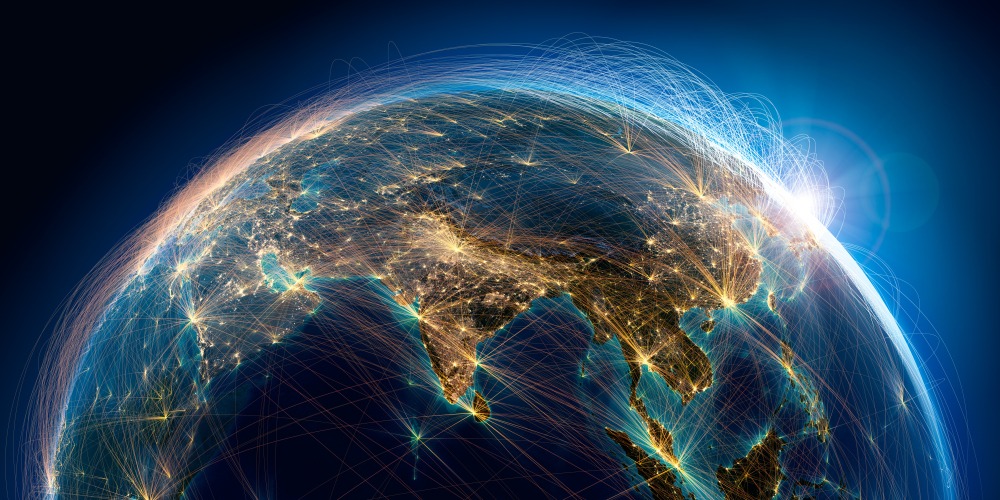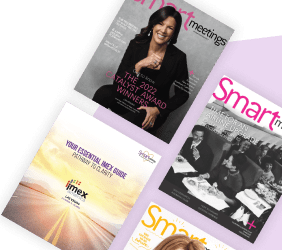Global meeting planners are exceeding expectations. Brand USA, a public-private partnership focused on increasing international travel, reported that in 2026, the U.S. is on track to welcome 90 million visitors one year ahead of the goal outlined by the National Travel and Tourism Strategy report. That number is up from 79 million in 2019.

The global travel trends represent a significant milestone—not just recovering from the pandemic but building momentum for future growth, according to Brand USA President and CEO Fred Dixon. “As I like to say, we’re moving from recovery to records. This achievement reflects the resilience of our industry and the incredible work being done by so many to make the United States the world’s premier travel destination,” he said.
“It’s a big goal, and we’re getting there,” said Elliott L. Ferguson II, new Brand USA board chair and CEO of Destination DC. In Washington, D.C., international visitation hit 1.95 million in 2023. That’s up 40% from 2022, but still about 15% below 2019 levels. “There’s still work to do,” he said.
Read More: Today’s Best Practices for Visas and International Travel
To understand what the increased traffic through Global Entry means for the meeting professional community, we asked the two executives what the strategy is for growing worldwide travel.
Why are international visitors important?
“International visitation is essential to our nation’s economy and communities,” said Dixon. International visitors tend to stay longer and spend more—on average, 17 nights and $3,400 per person—making them a critical part of the U.S. tourism ecosystem. That spending directly supports local jobs, sustains small businesses, and fuels the economy—making inbound travel the largest service export for the United States.
Read More: Celebrate World Tourism Day
What is the biggest challenge to growing incoming global travel?
 Ferguson acknowledged that visitors have a lot of choices when it comes to where to travel, and there are some challenges when it comes to the United States’ ability to compete. They include visa wait times, the overall ease of travel, airlift—increasing nonstop flights, economic factors like inflation and exchange rates and perception of the U.S. abroad.
Ferguson acknowledged that visitors have a lot of choices when it comes to where to travel, and there are some challenges when it comes to the United States’ ability to compete. They include visa wait times, the overall ease of travel, airlift—increasing nonstop flights, economic factors like inflation and exchange rates and perception of the U.S. abroad.
“We’re tackling these challenges by working closely with federal partners and national organizations like the U.S. Travel Association and the U.S. Department of Commerce,” he said.
“One of our biggest challenges is global competition—other countries are stepping up their game, investing heavily in tourism infrastructure and marketing,” reported Dixon. “Additionally, logistical barriers like visa processing times and the strength of the U.S. dollar can make us less competitive in terms of affordability and access,” he said.
Dixon also looked at the upside. “Challenges also bring opportunities, and our team is focused on turning those barriers into advantages by leaning into the unique value the U.S. offers international visitors.”
What is the strategy Brand USA is using to overcome those barriers?
“Our strategy centers on collaboration, innovation and storytelling, with a strong focus on creating a sense of urgency to visit the United States now,” said Dixon. “We’re working closely with federal agencies, local DMOs and other partners to ensure the U.S. remains the world’s premier travel destination.”
That includes embracing cutting-edge technologies like AI and leveraging data-driven strategies to deliver the right message to travelers at the right time. “From a branding perspective, we’re positioning the U.S. as the ultimate destination for leisure, business events, and cultural experiences,” he concluded.
Ferguson plans to prioritize a greater focus on the MICE market and special events, as well as marketing to areas of the world that the agency hasn’t traditionally focused on.
What is the most compelling enticement to encourage international visitors?
“There’s no place in the world like the United States—our diversity of people, places and experiences truly set us apart,” said Dixon. “From the bustling streets of our iconic cities to the tranquility of our national parks, there’s something here for everyone.”
He pointed to the wave of unprecedented global events happening in the next decade, including WorldPride, FIFA World Cup, America 250, 100th Anniversary of Route 66 and the 2028 Olympic Games and 2034 Paralympic Games. “These events, combined with the diverse attractions and experiences across the country, are powerful demand generators, and provide an opportunity to invite travelers to stay longer, explore more, and experience what makes the U.S. truly extraordinary,” he said.
Ferguson shared that Destination DC focuses on highlighting unique access to intellectual capital, ease of access and prioritizing diversity, inclusivity, accessibility and sustainability in tourism experiences.
Read More: International Cities You Need to Know
How can meeting professionals help attract more international delegates?
“Meetings and events have such a major impact on local economies, so we will continue to work with officials to underscore the impact of international delegates traveling to the U.S. and mitigate visa challenges,” Ferguson pledged.
“We recognize there’s always more to do, both as a destination and as an industry. By working together, we can elevate the experience for international delegates while addressing the challenges head-on,” he said.
“We see tremendous potential in the MICE space,” said Dixon. “Brand USA is expanding its scope beyond leisure by taking a fresh, innovative approach to identify impactful ways to support this sector in 2025 and beyond.”
Read More: MICE Industry’s Positive Impact on Business Travel
He offered that Brand USA’s international network of representatives across 26 countries is available as a resource for destination ideas and introductions.





